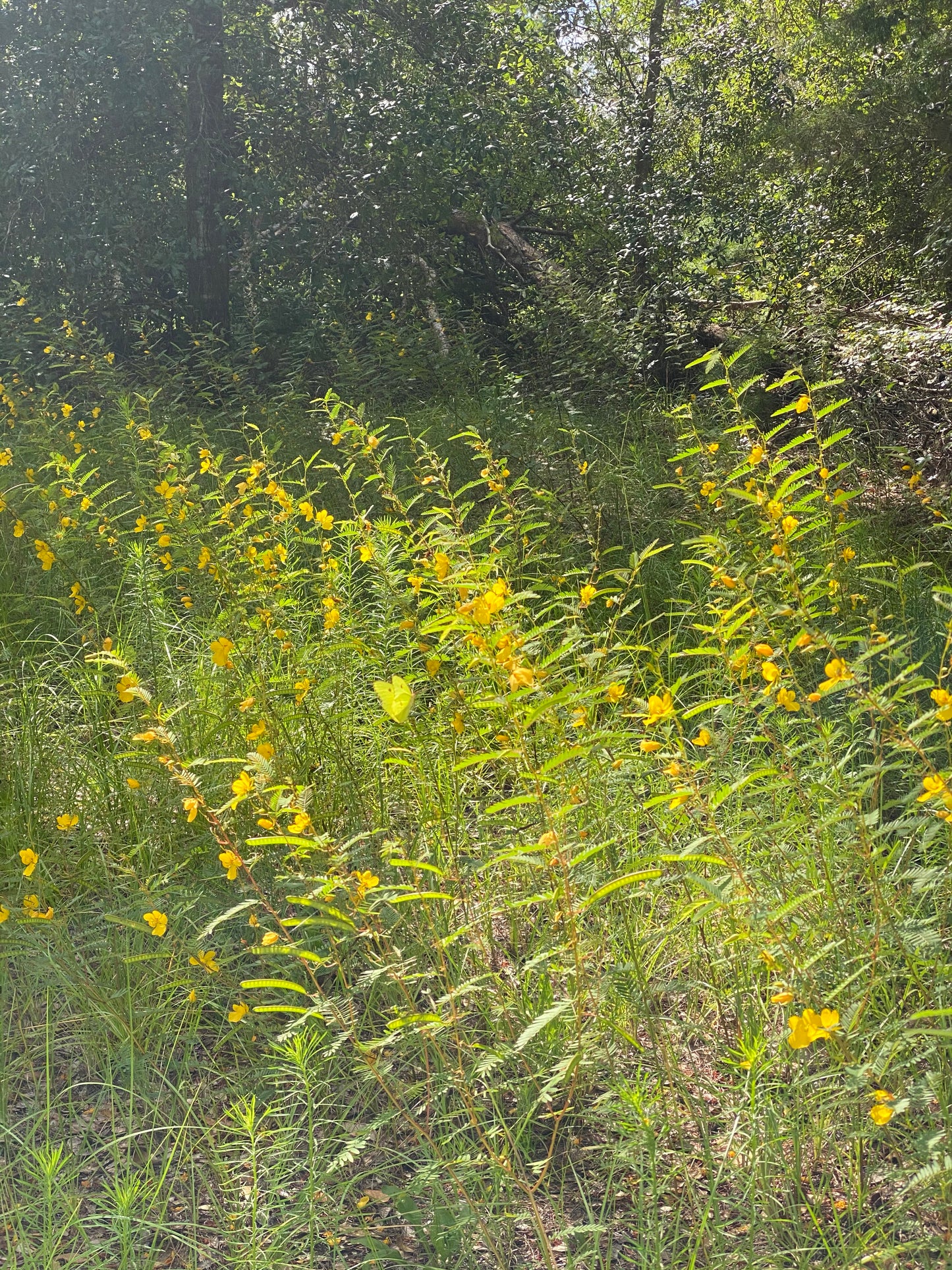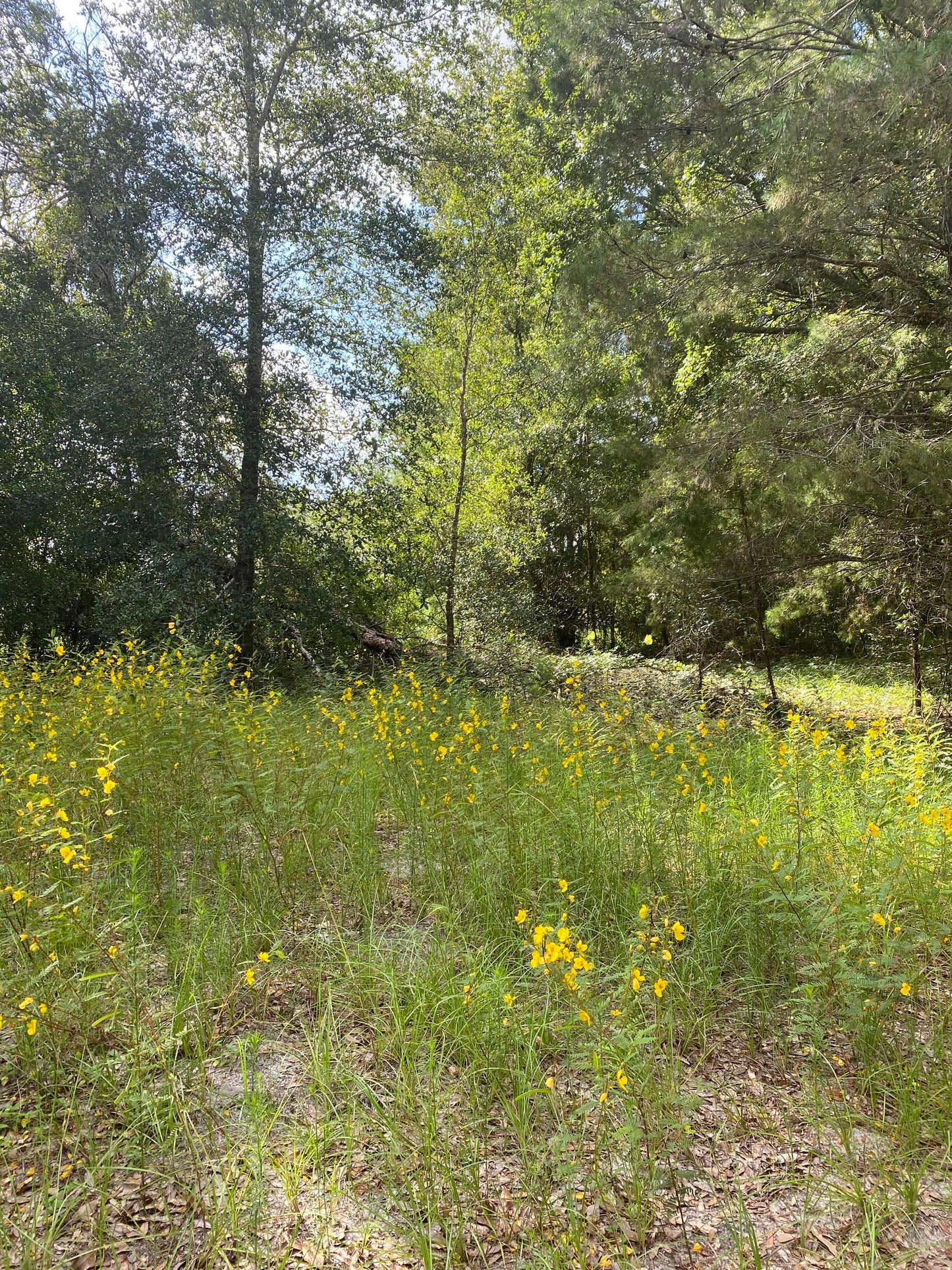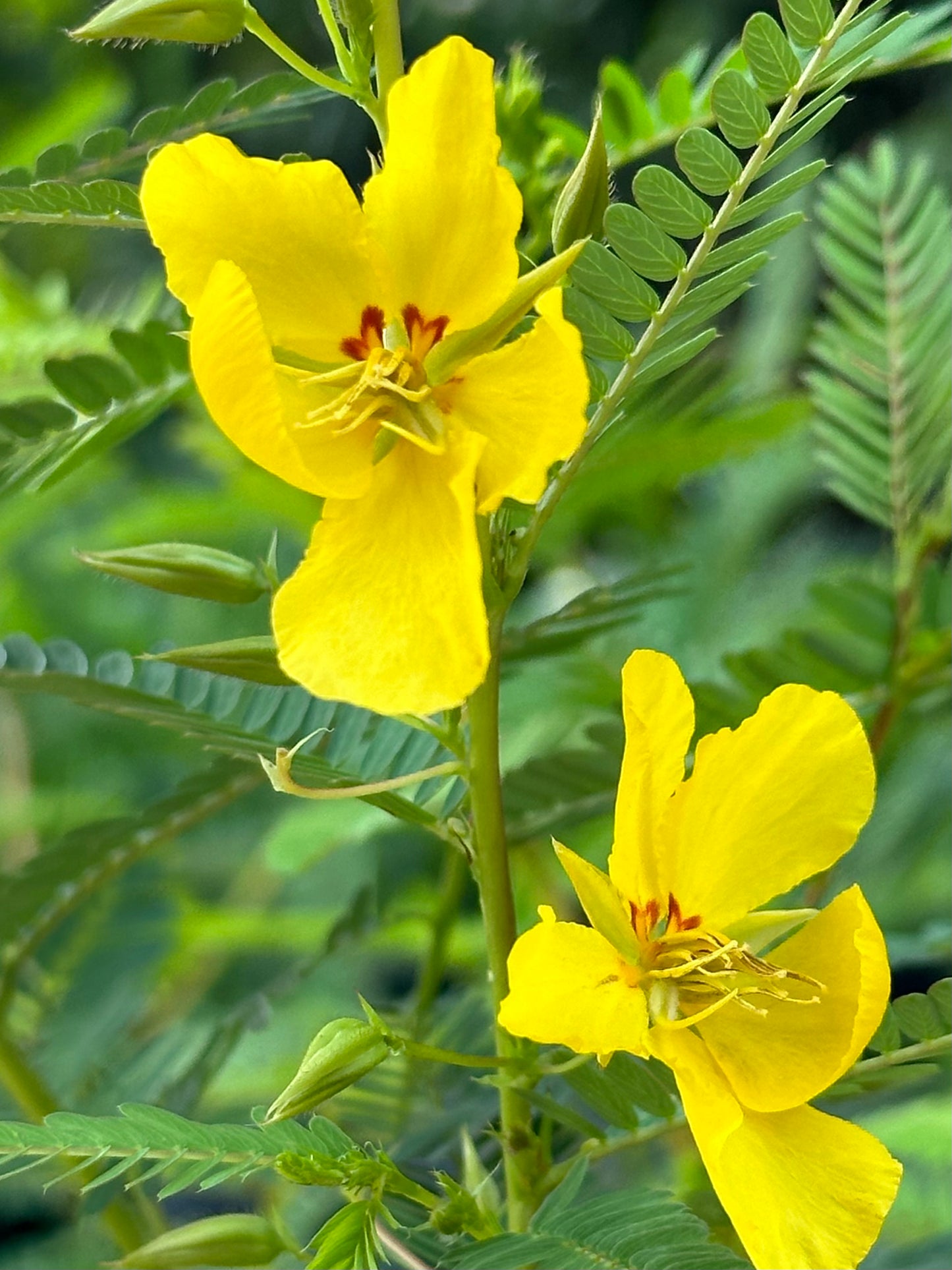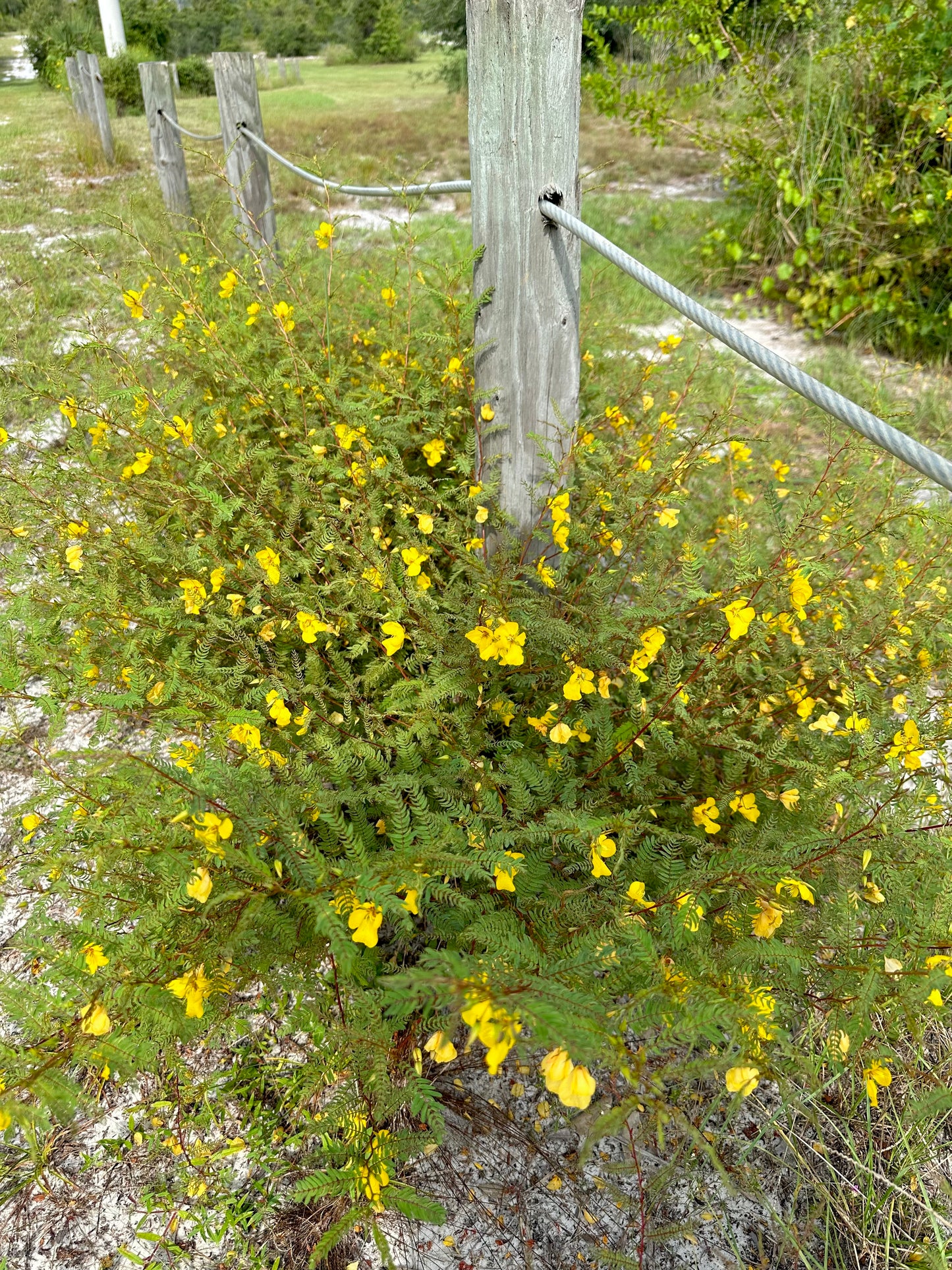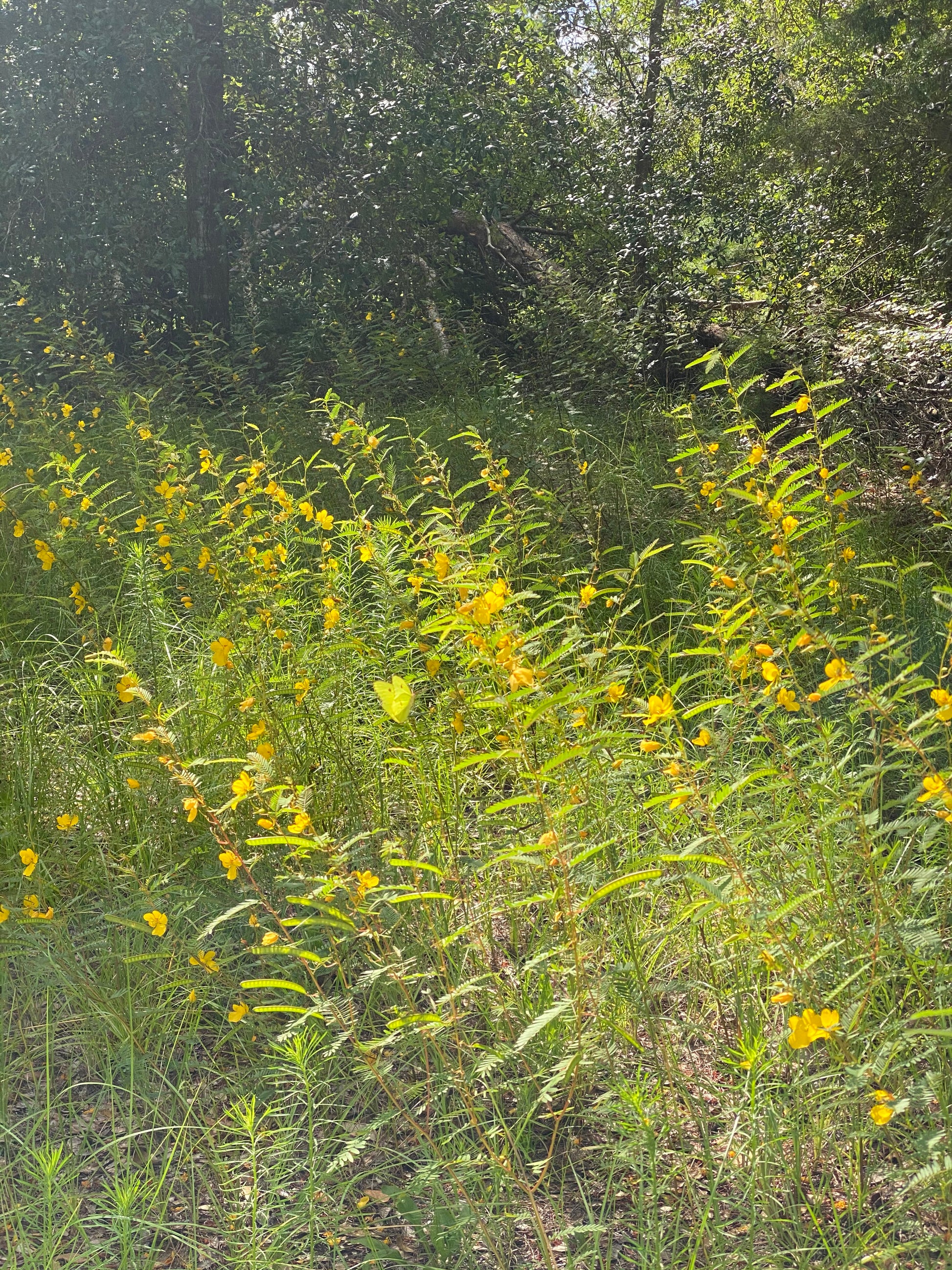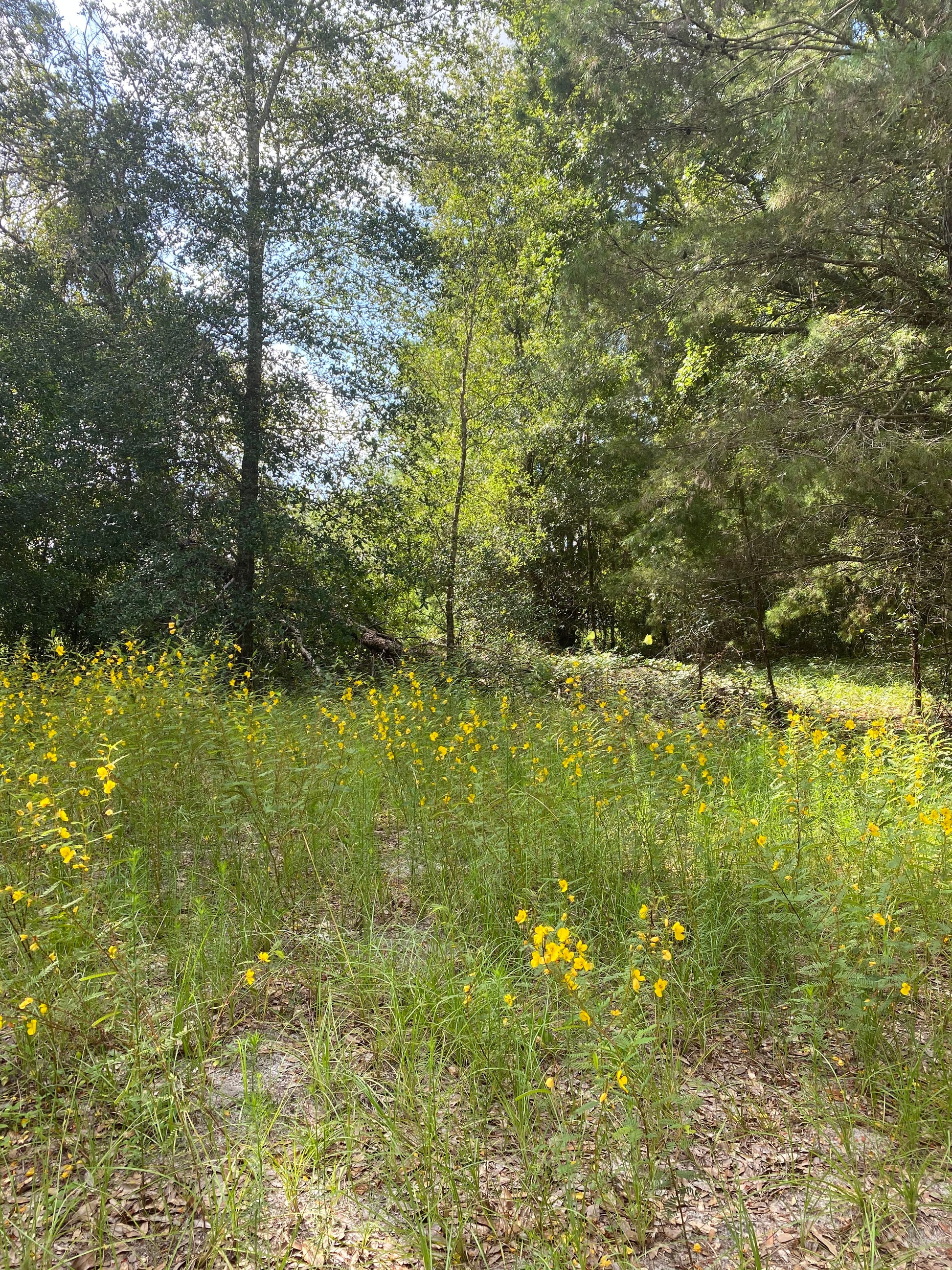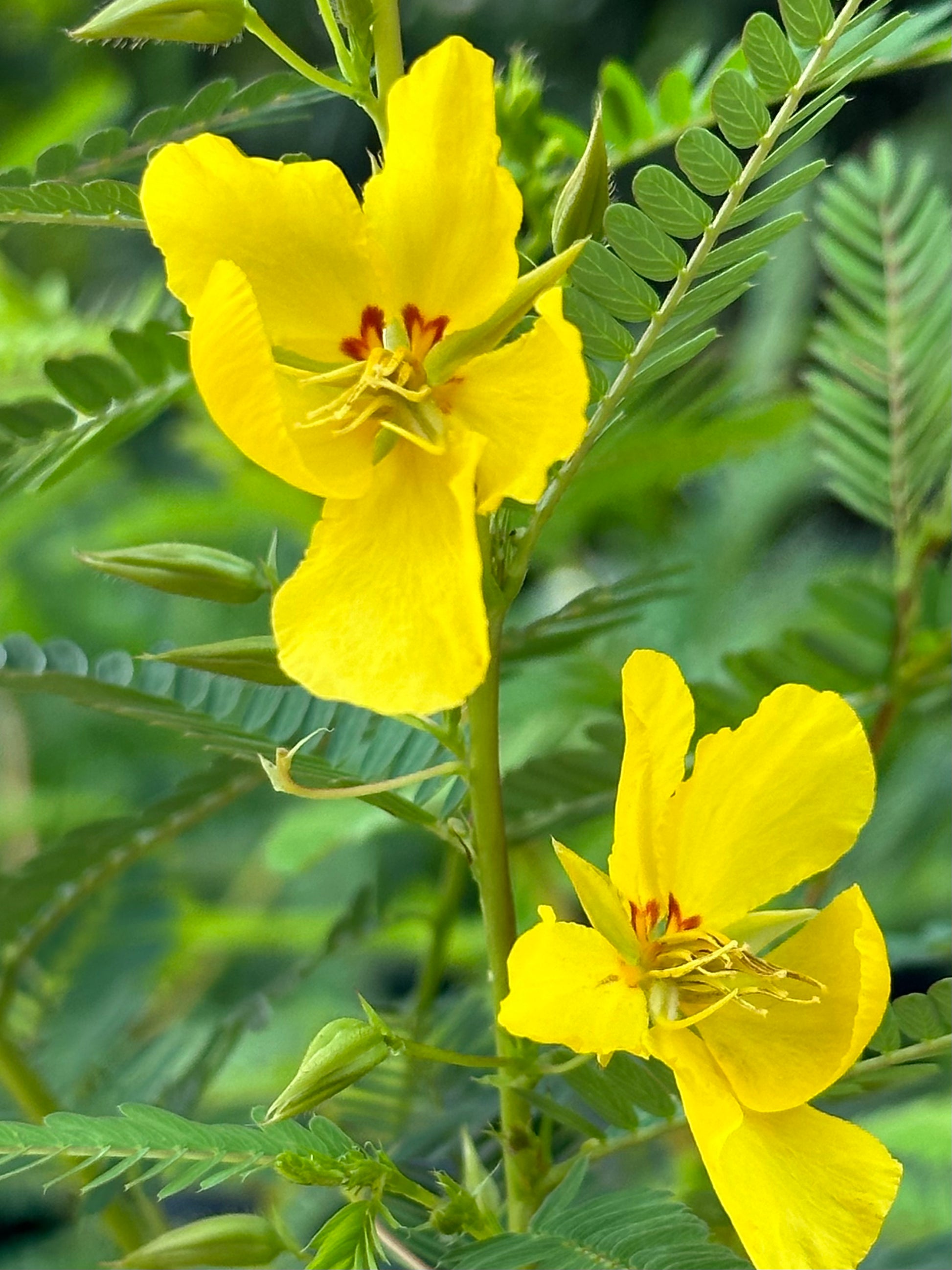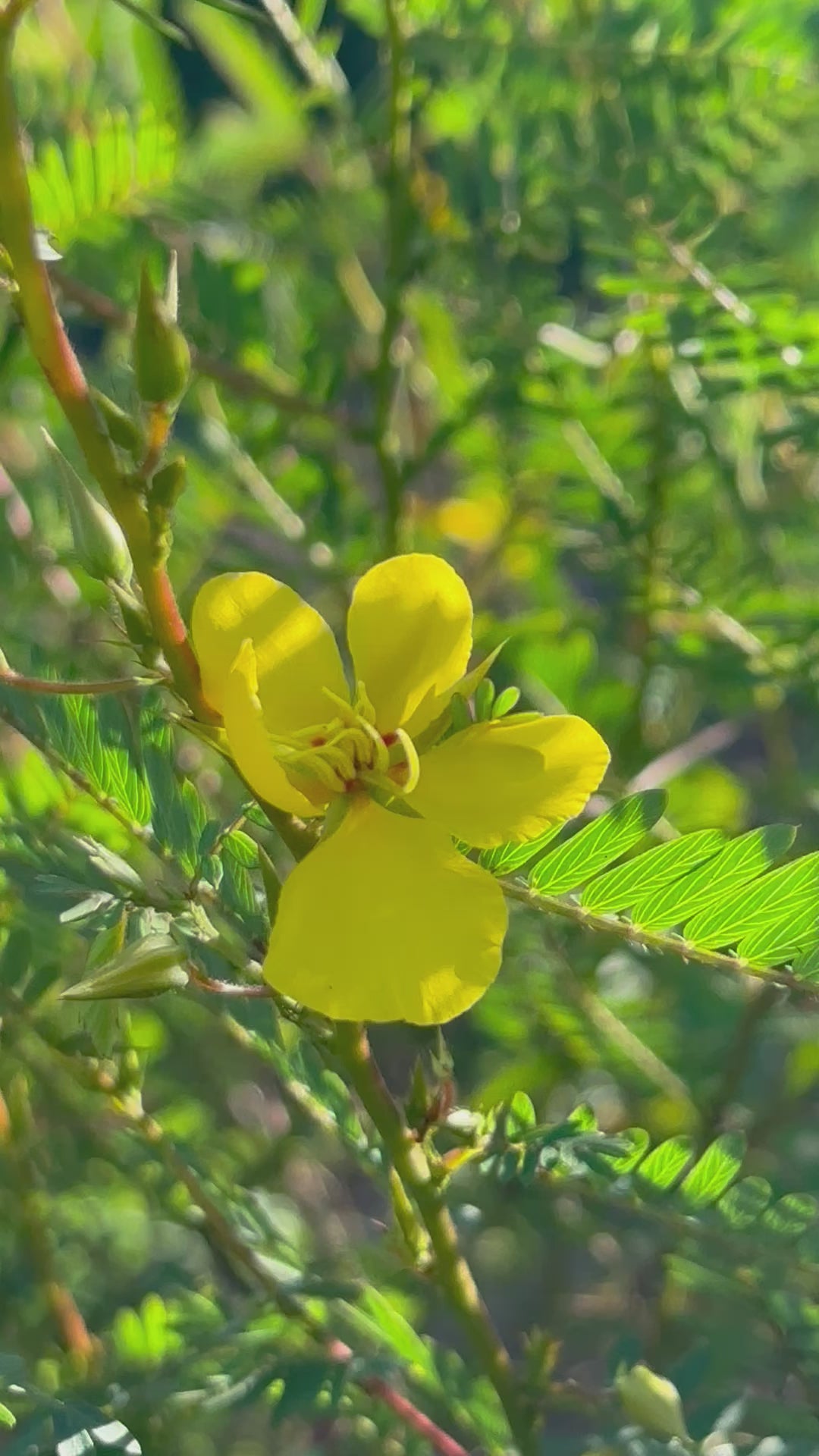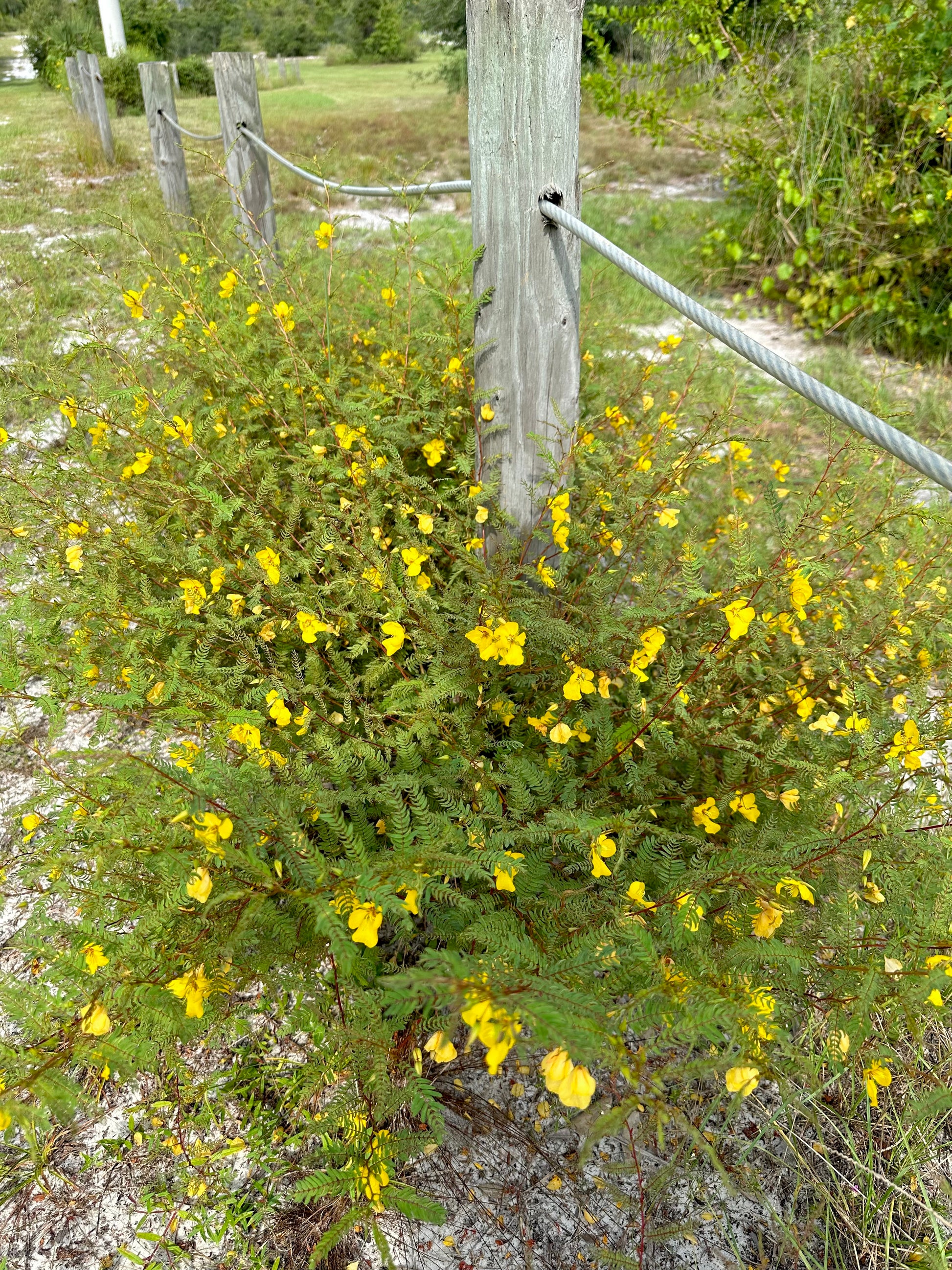My Florida Meadow Co.
Chamaecrista fasciculata - Partridge pea
Chamaecrista fasciculata - Partridge pea
Life Cycle: Annual, sometimes a short lived perennial
Soil Moisture: Very dry, well draining sandy to loamy soil
Sun Exposure: Full sun to partial shade
Height: 2-3’
Bloom Color: Yellow
Bloom Time: Late spring through late fall
Fauna: Larval host plant for the gray hairstreak, cloudless sulphur and ceraunus blue butterflies. Seeds are eaten by birds and other wildlife. Blooms attract butterflies and long tongued bees. Ants and other insects are attracted to the nectar glands on the leaf stems. Provides cover for birds.
Planting Considerations: Partridge pea is often an early pioneer of sites with disturbed soil. It has the ability to fix nitrogen in the soil, improving the soil conditions for other plants. Partridge pea is helpful to plant where erosion control is needed, or in an area that has been disturbed after construction where the soil needs to be improved.
Field Notes: A prolific self-seeder. Partridge pea is a great plant for honey production. Fern like leaves that fold towards the stem at night.
Share
